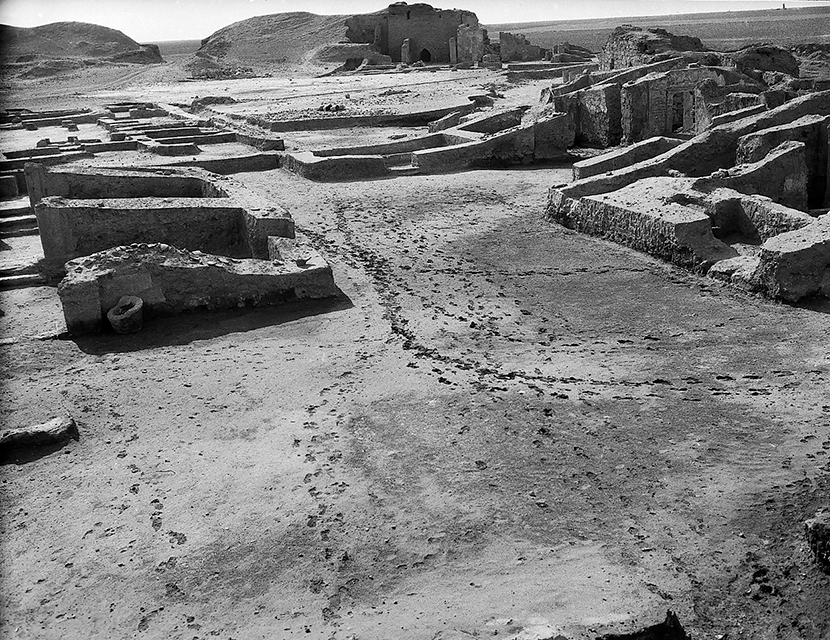Temple of Azzanathkona, view from west
YUAG, Dura-Europos Collection, negative number dura-e310~01

Dura’s temples frequently appear devoid of objects or people in the photographic record, in keeping with the desire to adhere to the conventions in scientific archaeological photography developing at that time. The Temple of Azzanathkona, like others at the site, features a Mesopotamian court plan, with a large central courtyard surrounded by multiple rooms, some of which contained altars and benches. Originally constructed in the years 12-13 CE, the temple was still in use in the 160s when it was absorbed into the Roman military garrison in the northern sector of Dura and the principia (military headquarters) was located next to it. Papyri were discovered in the northern rooms of the complex, including the famous Feriale Duranum (P. Dura 54), a military religious calendar dated to about 223-27, now in the collection of the Beinecke Library.